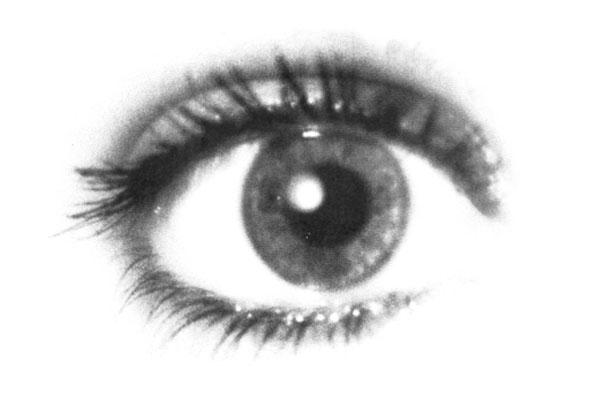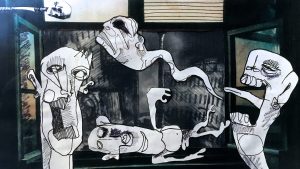
Dreamspace: The Art of Lucid Sleep
by Hugh Kennedy | February 25, 2014
 Imagine a world of exquisite beauty and stark intensity, which is just as real in its own way as our everyday physical world, and has as much effect on the way we live our lives. This world holds within its hidden depths the keys to ecstatic pleasure, the resolution of problems which plague us, maybe even the meaning of the universe and our place in it. We visit this world every night, yet many of us are only half aware it exists.
Imagine a world of exquisite beauty and stark intensity, which is just as real in its own way as our everyday physical world, and has as much effect on the way we live our lives. This world holds within its hidden depths the keys to ecstatic pleasure, the resolution of problems which plague us, maybe even the meaning of the universe and our place in it. We visit this world every night, yet many of us are only half aware it exists.
You can teach yourself methods, one of which is lucid dreaming, to map out and explore the furthest recesses of your personal reality. A lucid dream is a state of mind in which a person realises he is dreaming. This awareness can range from the passing realisation that ‘by the way, this is a dream’ to complete control over the subjective environment one explores in dreams, and the events which occur in this inner space.
The art of lucid dreaming has been known for thousands of years. As early as the eighth century BC, Tibetan Buddhists considered the mastery of lucid dreams to be an important prerequisite to enlightenment. By viewing dreams with this awareness, a monk could recognise the shifting, illusory nature of dream symbols, and carry this awareness through into perceptions of waking life. Thus the adept could see that the consciousness, rather than physical existence, was the true nature of reality. Aristotle knew about lucid dreams, as did St. Augustine, who, in 415, wrote about the dream experiences of Gennadius, a Roman physician.
As a young man, Gennadius was having problems with the concept of life after death. One night, he dreamed of a youth who took him on a tour of a beautiful city filled with music. The following night the youth came again, and Gennadius realised he was dreaming, with his body lying in bed. The youth reasoned with him that if he could perceive and interact in a completely different realm, divorced from the physical plane in which his body lay motionless with closed eyes, he should not trouble himself with doubts over existence following the death of the body. In tribal cultures, dreams and visions are an integral part of everyday existence. People have gone to extreme lengths (such as prolonged fasting and self-mutilation) in order to gain insights into their personal make-up, the nature of the universe and the interrelatedness of the two. In twelfth century Spain, Ibn-Al-Rachaidibi, an Islamic Sufi, exhorted his followers to practice lucid dreaming.
So how do you lucid dream? It doesn’t come easy, and requires motivation and self-discipline to bring out the innate ability we all have. Put simply, you must first notice that you’re dreaming, by programming yourself to dream lucidly before going to sleep, observing incongruities in the events that are occurring or exploiting certain dream types. Then, having entered a lucid state, you must maintain it as the dream progresses. This can be broken down into a number of steps as follows:
1. The first step is to build bridges between the physical and dream worlds so that the ego can cross over more easily. Keep a dream diary beside your bed to record the events of the previous night. Analyse your dream images during waking consciousness. This is a two way process, for as you observe your dream life during the day, so you will become more rationally aware of what’s happening while you’re dreaming.
2. Studies show that lucid dreaming occurs most readily between 5 and 8am, perhaps when the body is fully rested, so try and concentrate any efforts during this period.
3. Before going to sleep, reinforce the intent to lucid dream, maybe with a verbal affirmation, perhaps with a visual image.
4. Once you’ve moved between the folds of that heavy velvet curtain into the dreamworld, the next step is to attain a prelucid state, i.e. you suspect you may be dreaming, or something is amiss. For instance, when a policeman came in from the garden the other morning, leaving muddy footprints across the kitchen, knocked gently on my bedroom door and started asking me questions about my family tree, I sensed something odd was happening. It’s good to cultivate a critical attitude in dreams, whereby you question the weird happenings and strange qualities of what’s going on around you. Once you can say “hang on, that’s not real, this must be a dream”, you will move into a lucid dream state.
5. Three particular types of dream are often associated with lucid dreaming. The first of these is the nightmare, in which one is confronted with terrifying or deeply disturbing images. If the experience is particularly intense, some kind of mental safety valve may blow, at which point the realisation “it’s okay these (spiders/daleks/root vegetables) can’t really (eat me/ steal my brain/send me rude letters), this is just a dream.” At this point, one may choose either to wake up, or to continue with the transformed dream. The second dream type is false awakening. In this dream, one apparently wakes up in bed, but this is just another part of the dream (remember An American Werewolf in London?). Sometimes, the false awakening is accompanied by a strong feeling of suspense; sometimes the cycle of waking up and realising you’re dreaming can be acted out three or four times. This has led some philosophers to speculate whether what we consider to be the physical world is just another layer of the dream — this is exemplified by the Taoist sage Chuang-Tsu, who, on awakening from a dream in which he was a butterfly, mused, “Now I do not know whether I am Chuang-Tsu dreaming I was a butterfly, or a butterfly dreaming I am Chuang-Tsu.”
It is sometimes possible to notice slight anomalies in your environment, which will give away the fact that you’re still dreaming and thus precipitate a lucid dream. For instance, after I wrote down my policeman dream the other night, I rolled over and lay still for a small while, then opened my eyes. Looking up, I saw a bunch of bananas balanced on top of my cupboard. “Aha,” said I, “I’m lucid dreaming, those bananas weren’t there before. Time to gather a bit of subject matter for that article.” Unfortunately, shortly after that, I lost lucidity and the dream degenerated into images of newspaper cutting hanging in the air.
The third dream type is the flying dream. Nearly all habitual lucid dreamers also regularly have flying dreams; when the incidence of flying dreams goes up, so does the occurrence of lucid dreaming. Why exactly the two dream types are so closely related is unknown; maybe it’s because they are both expressions of a dreamer exerting control over his or her virtual world.
Not surprisingly, Freud believed flying dreams to signify “nothing more than the desire to be capable of sexual activity” and likened them to the pleasurable sensation of genitals swinging around when walking. Hmm. He also admitted to be totally mystified by them, and that he himself had never experienced one.
There are several different methods of inducing this type of dream (i.e. taking off). Sliding yourself down a hill, using large, ski-like feet to steer yourself into the air is one possibility, throwing yourself off a high building and getting carried away by air currents is another. I find using large, bounding steps whilst having spring-loaded ankles, Inspector Gadget-style, is a good method of getting airbourne. All it takes is a little imagination.
6. Once the realisation you are dreaming comes, it is important to maintain a degree of emotional detachment, otherwise you may wake yourself with excitement.
7. It is important to remain aware at all times that you are dreaming, or else you will likely lapse back into normal dreaming. Carlos Castenada, reputedly a one-time apprentice to a Yaqui Indian sorcerer, describes in one of his books how his teacher, Don Juan Mathos, explained a method for maintaining a lucid dream. Apparently, before you go to sleep, stare at your hands, fix your mind on your hands (it could equally well be any symbol – a bunch of bananas, perhaps – but hands are convenient since they’re always there). When you enter dreamspace, at some point you will look at your hands and remember you’re dreaming. Stare at your hands until they start changing shape, then look up and explore your immediate environment. As soon as you feel yourself losing lucidity, look back at your hands again.
Why, one may ask, would anyone put so much effort into learning to lucid dream? What use is it? Firstly it is a constructive way of spending the time spent asleep, exploring a dreamworld of almost unlimited parameters in which you can create an organic virtual reality with a single thought. One experiences a sensation of freedom and heightened awareness, which has been compared to the effects of various psychoactive drugs. It is possible to fly anywhere in this world or others, make love with a partner of your choice, travel through time, or any number of enjoyable activities. According to Stephen LaBerge, a lucid dream researcher, these pleasurable sensations are recognised as being physically beneficial, lowering blood pressure, reducing the risk of cancer and heart disease, as well as lowering the incidence of stress-related conditions such as ulcers. He has also been measuring the effects of lucid dreamwork on the healing rates of small lesions on his arms.
The therapeutic possibilities are indeed great. Dream sex, for instance, could be used to cure psychosexual disorders. I had related to me the story of a man who had his legs blown off at the end of the second world war. During his dreams for the next sixty years, he saw himself with a full complement of limbs; over this time, he could not come to terms with his loss. It was only towards the end of his life, when he started dreaming about himself without legs that he came to accept this. Perhaps people in similar circumstances could learn to live with their disabilities more readily if lucid dreaming techniques were employed. Bereaved people could also accept loss, and sort out unfinished business, by meeting a deceased friend or family member in a lucid dream.
Frightening or threatening dream images, aspects of the shadow self, are often projected onto other people in the outside world. They could be confronted in inner space during lucid dreaming, safe in the knowledge that one was dreaming and therefore they couldn’t hurt you. Such symbols, a green-eyed monster representing jealousy, perhaps, or a fire-breathing dragon symbolising uncontrolled anger, when one actively tries to communicate with them, are often friendly and helpful, with lessons to teach, they are, after all, unsublimated facets of oneself. Meetings like this can be a growth point, leading to a more integrated personality.
Lucid dreaming can also be used as a sort of ‘life simulator’ in which one could resolve problems or make decisions by acting out certain situations or courses of action in dreamspace. One could seek advice from inner guides – for example, one person regularly meets Einstein in lucid dreams in order to receive help with maths problems.
Skills can be practised in lucid dreams. Water-skiing, driving or public speaking are examples of activities which, when rehearsed in a dream state, also improve in real life. Jack Nicklaus claims to have improved his handicap by ten points overnight, following a dream in which he observed what was going wrong with his golf stroke.
Lucid dreaming is also a powerful tool being employed in sleep research. Due to the similarity of waking and lucid dream consciousness, a real-time rapport can be established between subjects and observers by pre-arranging dreams, and the dreamer giving signals (such as a particular sequence of left/right eye winks) when they start having the dream in question. Leaps of knowledge are being made with respect to study areas such as dream speed, effects of dream body movement on the physical body, and the psychological effects of emotional stimuli.
Either way, lucid dreaming is a skill which, though not easy, can be learned by anyone. Whether you seek good sex with salacious film stars, a solution to problems with your girl/boyfriend, better study patterns or a door way to nirvana doesn’t matter. With practice, patience, and a little creativity, your world is at your feet.




